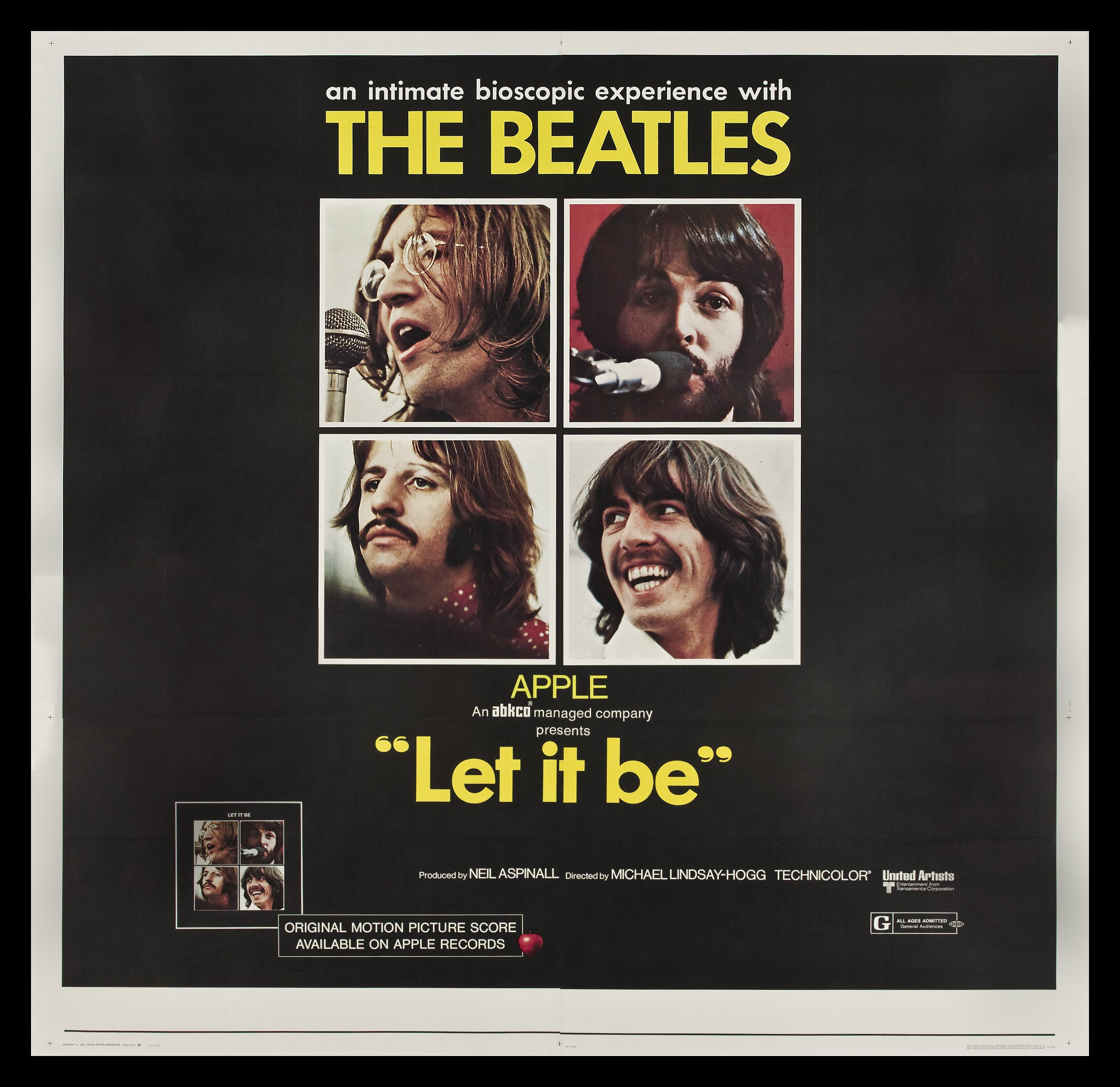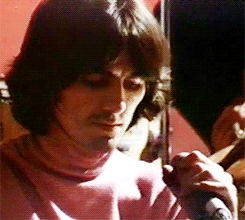One Anglophile’s Take on “Let it Be” (and why we can’t expect it to come out on DVD anytime soon)
By Derek
July 9, 2015
For those of you who haven’t watched the Beatles’ 1970 documentary Let it Be (likely through less than legal means, for reasons I will get into here), here’s what went down: After noticing how unusual The White Album turned out to be, especially with the songs increasingly becoming less rock n roll, and being less group-oriented, Paul decided the band should get back to basics, writing new songs and performing them at a special concert that nobody agreed exactly where it should take place. They decided to rehearse at Twickenham Studios in London and have a crew film them for a possible TV Special. It did not go well; instead of showcasing a reborn Beatles, it showed off the beginning of the end, with constant fighting between Paul and the other members of the band. In the end, the concert did take place, on the Apple Studios rooftop, and the footage for the TV special was released into a full-blown movie.

However, the last time it was released to home video, it was in 1981. In the decades since, the band has teased the possibility of a rerelease (including, in 1992, doing what appeared to be a full restoration of the film which only saw the light of day through snippets on the Anthology miniseries,) but it always fell through. I’ve heard rumours that it was briefly available on Netflix, but I can find no hard evidence. I’ve mentioned this before, and I feel like I should explain a few reasons why we can’t expect it to happen anytime soon.

Dutch video cassette.
The first, and likely foremost, reason that it has never been rereleased can be seen in the film’s content itself. Here’s a rough analogy: The 2010 film Blue Valentine is a story about the love affair of a couple, flashing back forward between their early days and the excruciating break-up. It’s a very difficult film to watch. Now imagine that there was a version that took out the “Early days” scenes and replaced it with more break-up scenes, and, instead of Michelle Williams and Ryan Gosling, it’s your favourite band going through this terrible break-up.

And what’s worse is that, as difficult as it is to watch, there was a lot of material that painted them in a worse light that never made it into the final film. Apparently, there was an argument between John and George that apparently led to blows and another incident where George got so fed up with Paul and his attempts to control the band that he actually left the band for five days, and rejoined only on the condition that they move from Twickenham to Apple Studios.

Of course, what still remained in the film is damning. Before this period, when one looked at The Beatles, one would be hard-pressed to identify a single “frontman” for the band. John and Paul worked more or less on equal terms (to the extent that, when the time came for them to do a single, oftentimes, both would write a song and the A-side would be determined simply by a coin toss) and George wrote and sang on enough songs that he couldn’t be written off as a simple sideman. This time around, Paul seemed to do everything in his power to control the band. And, surprisingly, the Beatle who bore most of the brunt of it was not John, but George.

At this point, John was at an all-time low in musical productivity. Even disregarding the “albums” he made with Yoko around this time, he only contributed a few songs to the sessions; counting both the albums and the b-sides that didn’t make it, he only got five songs released. “One After 909″ and “Across the Universe” were recycled from previous sessions, “Dig It” was just a jam that got edited to less than a minute on the soundtrack album, leaving only “Dig a Pony” and “Don’t Let Me Down.” Meanwhile, George’s material was at an all-time high, bringing songs like “All Things Must Pass” and “Isn’t It a Pity” into the studio, where, alas, Paul immediately rejected them. Of course, he did Paul to okay songs like “For You Blue,” and “I Me Mine,” but he still had to put up with Paul’s increasingly controlling nature; in the finished film, we can see Paul and George arguing about the right way to play a lick on “Two of Us,” a fight that was a major factor in George’s temporary departure. In another scene, he lectures the other Beatles about the direction he thinks the band should go in to a largely unresponsive audience; the lesson is clear: The band’s days are numbered. With scenes like this, I’m inclined to think that the reason John brought in Phil Spector to add those infamous “finishing touches” is because, at the time, he thought a man with the serious mental problems Phil had would actually be an improvement on Paul.

At this point, it’s not hard to imagine that Paul is not particularly proud of how he acted those days in January 1969. And given that it seems modern-day Beatles projects require the unanimous approval of Paul, Ringo, Yoko, and Olivia Harrison, it’s really not hard to see why it hasn’t seen the light of day. And given what made it into the final film, I can easily imagine that if The Beatles did release it, fans would likely buy it and immediately regret doing so upon watching it; and this is a fandom willing to shell out money for several separate versions of albums (The official versions; the mono versions; the CD rerelease of the original American LPs). At this point, I would be very surprised if the film ever saw the light of day within Paul and Ringo’s lifetimes.


No hay comentarios:
Publicar un comentario